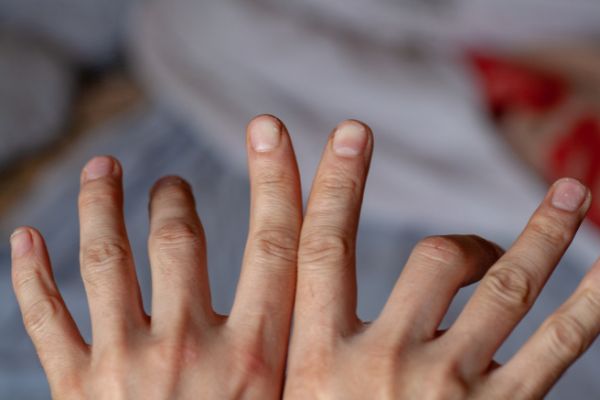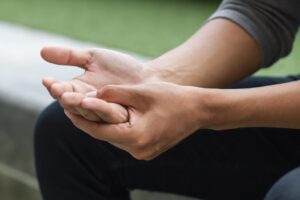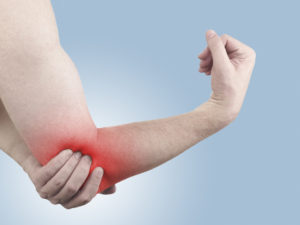Carpal tunnel syndrome (CTS) is a common condition that causes pain, numbness, and weakness in the wrist and hand. It can affect the function of the entire arm and is caused by pressure on the median nerve at the base of the palm. Due to the daily demands placed on our hands and wrists, some cases of CTS may require surgery. However, many patients can find relief and restore normal hand function through specialized hand therapy. In this article, we will explain more about carpal tunnel syndrome and how seeing a hand therapist when you have this condition can help.
Michigan Hand Therapy for Carpal Tunnel Syndrome
At Arora Hand Surgery practice, our expert certified hand therapists, Lodia and Kay, provide tailored treatment plans to help alleviate CTS symptoms and improve function. With their expertise, they educate patients about carpal tunnel syndrome, helping them understand how daily activities impact the nerve and equipping them with strategies to reduce stress on their hands.

What Is Carpal Tunnel Syndrome?
The carpal tunnel is a small passageway in the wrist that houses the median nerve and flexor tendons. When the tunnel narrows due to injury, inflammation, or repetitive strain, it can put pressure on the nerve, leading to pain, tingling, and weakness in the hand. The most affected fingers are the thumb, index, middle, and sometimes the ring finger.
CTS is common in people who perform repetitive hand movements, such as office workers, assembly-line employees, musicians, and those who frequently use hand tools. Other contributing factors include injuries such as fractures and co-morbidities such as arthritis, diabetes, fluid retention, and hormonal changes.
Signs and Symptoms of Carpal Tunnel Syndrome
CTS often starts gradually, with symptoms like:
- Numbness, tingling, or burning in the thumb, index, and middle fingers, especially at night.
- Weakness in the hand, making it difficult to grip objects.
- Increased discomfort when using a computer, holding a phone, or gripping heavy objects.
- A sensation of needing to “shake out” the hands to relieve symptoms.
How Is Carpal Tunnel Syndrome Diagnosed?
Dr. Avery Arora conducts a thorough evaluation that may include an EMG.
How Can Hand Therapy Help with CTS?
One fear that many patients express is that the only journey to a lifelong solution for CTS is surgery. However, we want to reassure you that this isn’t necessarily the case. A customized hand therapy program can significantly improve CTS symptoms. Our therapists empower patients with the knowledge needed to reduce stress on the median nerve, possibly resolving their symptoms, and develop personalized treatment plans that may include:
- Patient Education: Guidance on wrist positioning, ergonomic adjustments, and activity modifications to reduce strain.
- Nerve Mobilization Exercises: Gentle movements to improve nerve mobility.
- Strengthening Exercises: Targeted exercises to build hand and wrist strength and promote better posture.
- Splinting: Evaluating whether a splint is needed, particularly at night, to keep the wrist in a neutral position and relieve pressure on the nerve.
- Cold and Heat Therapy: Providing education on the benefits of cold and heat therapy techniques to reduce inflammation, improve circulation and nerve pain.
- Workplace and Lifestyle Adjustments: Recommending ergonomic tools, wrist supports, and posture corrections for daily activities.
When Is Surgery Needed for CTS?
However, if symptoms persist or worsen despite conservative treatments such as steroid injections, surgery may be necessary to relieve pressure on the median nerve. Our team at Arora Hand Surgery doesn’t take this decision lightly and will be sure to guide you through this option. If surgery is performed, our hand therapists will assist with post-operative rehabilitation, helping you regain strength and function.
Preventing Carpal Tunnel Syndrome
While CTS cannot always be prevented, you can reduce the risk by:
- Maintaining good posture and wrist alignment.
- Taking frequent breaks from repetitive hand activities or reducing them altogether.
- Using ergonomic tools and workstation adjustments.
- Keeping your hands warm and relaxed during tasks.
- Staying physically active and managing underlying health conditions.
Why Choose Arora Hand Surgery for CTS Treatment?
With Lodia and Kay leading our hand therapy program, we offer expert, compassionate care to empower you with the knowledge needed to promote nerve health and possibly reduce symptoms. If you’re experiencing CTS symptoms, schedule an evaluation with our team to explore the best treatment options for you. If you’re experiencing carpal tunnel pain and are seeking a treatment plan, contact Arora Hand Surgery today for a consultation at one of our four convenient southeast Michigan locations.




























